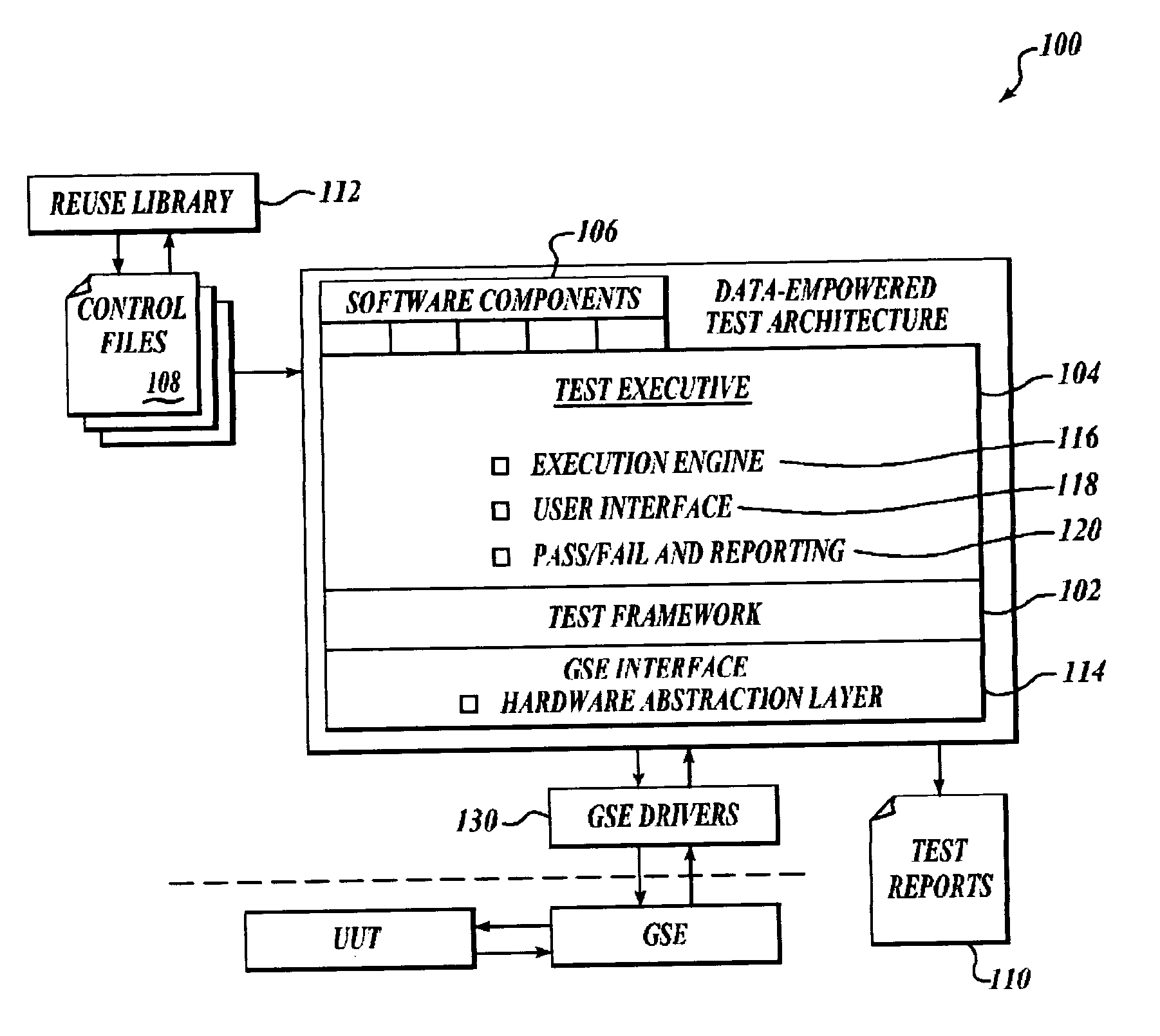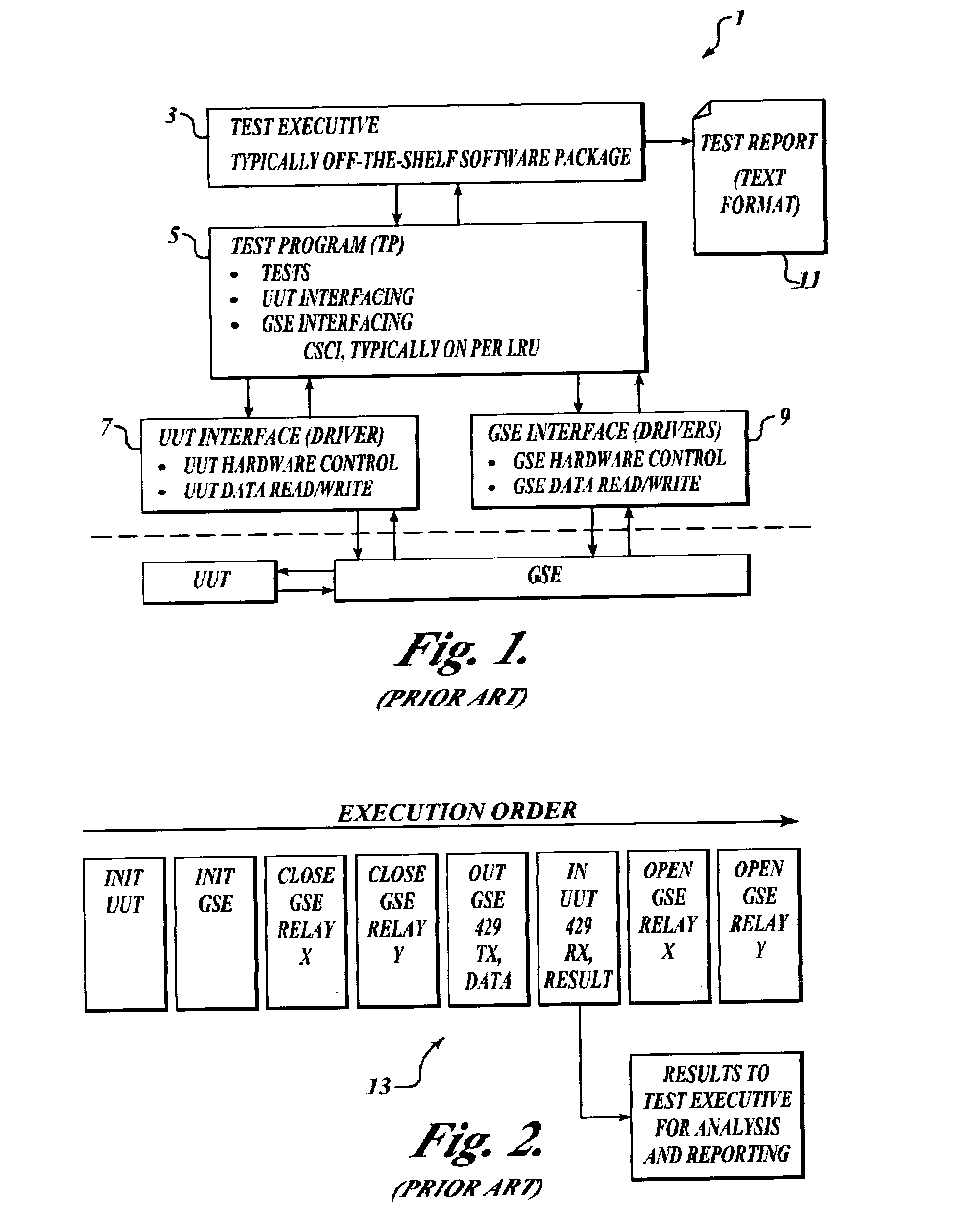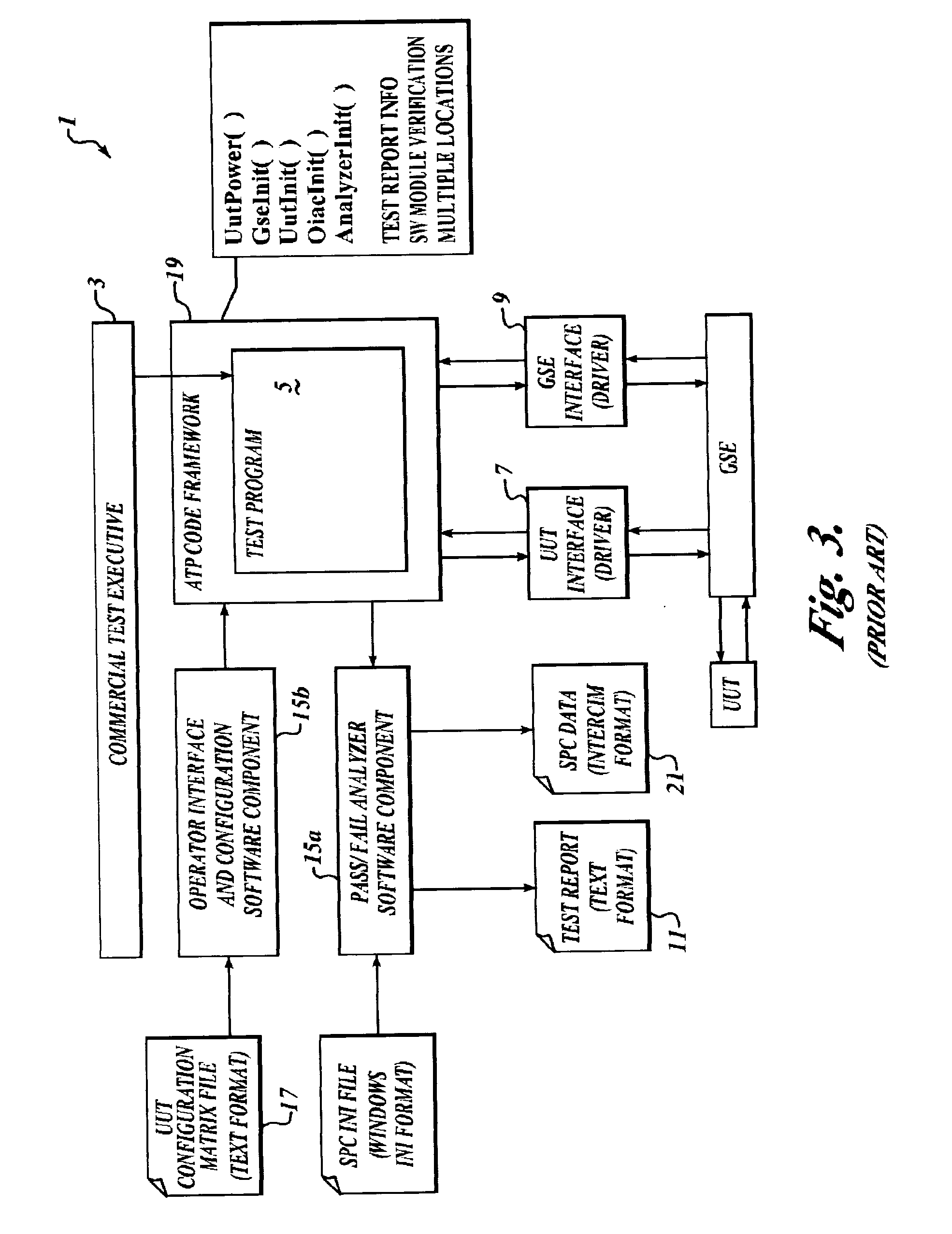Data empowered laborsaving test architecture
a data and labor-saving technology, applied in the field of software test programs, can solve the problems of high relative cost consumers are not willing to pay, solution may not meet the project needs, and traditional test development groups are unable to provide the needed additional test development and maintenance capability with current or reduced head-count, etc., to achieve the effect of efficient operation
- Summary
- Abstract
- Description
- Claims
- Application Information
AI Technical Summary
Benefits of technology
Problems solved by technology
Method used
Image
Examples
Embodiment Construction
[0083] In the Figures, like numerals indicate like elements.
[0084] The test architecture of the invention is embodied in a data-empowered test architecture that overcomes the shortcomings in the traditional test program development process, incorporates best practices in place in the industry, and fulfills the ultimate goal of allowing test development engineers to operate more efficiently.
[0085]FIG. 4 and FIG. 5 are top-level and high-level block diagrams, respectively, that together illustrate the test program development method of the invention embodied in a data-empowered test program architecture 100 that utilizes a test framework module 102, a test executive module 104, a plurality of software components in a software components module 106, and one or more external control files 108. hardware abstraction included in the architecture enables the code-base of the data-empowered test architecture of the invention to work with virtually all current tester hardware, including by ...
PUM
 Login to View More
Login to View More Abstract
Description
Claims
Application Information
 Login to View More
Login to View More - R&D
- Intellectual Property
- Life Sciences
- Materials
- Tech Scout
- Unparalleled Data Quality
- Higher Quality Content
- 60% Fewer Hallucinations
Browse by: Latest US Patents, China's latest patents, Technical Efficacy Thesaurus, Application Domain, Technology Topic, Popular Technical Reports.
© 2025 PatSnap. All rights reserved.Legal|Privacy policy|Modern Slavery Act Transparency Statement|Sitemap|About US| Contact US: help@patsnap.com



